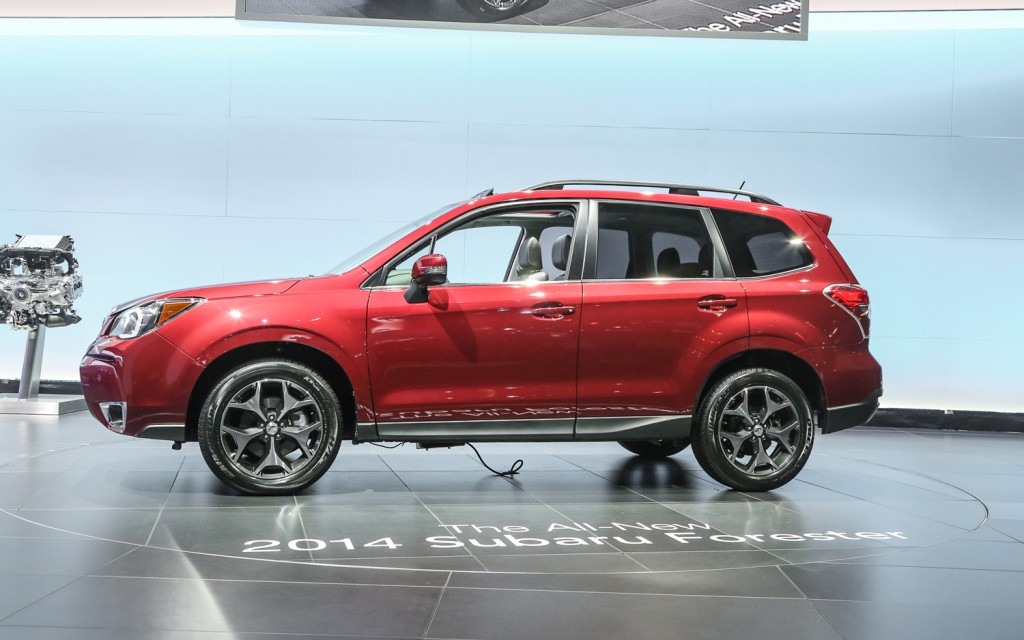I took the Forester up a steep — if not extensive — off-road course on the side of an Arizona hill and had few issues with traction. Only while making a turn to descend did it require a second and third attempt to accelerate through the maneuver. The 8.7 inches of ground clearance helps in situations like this, as does a new X-Mode system in higher level trims and the XT turbo. X-Mode allows for more control in certain driving conditions and when equipped, adds hill descent control.
My co-driver and I also traveled more than 50 miles of unpaved public roads of loose dirt and rock at decent speeds ranging from 40 to 60 mph in both versions of the Forester. While the ride had been comfortable on paved roads, we were both a bit surprised at how the little SUV handled these surfaces with barely any jarring effects to the passengers.
Generally you think of people in Northern regions opting for all-wheel-drive vehicles like the Forester, but the trip showed that there are quite a few warm-weather areas that could benefit from the technology. We even passed a previous-generation Forester pulling into a driveway on our unpaved route.
Of course, all-wheel-drive systems generally hurt fuel economy, but Subaru has done wonders with the 2.5-liter’s efficiency. It’s rated 24/32 mpg city/highway and 27 mpg combined.
Those are excellent numbers even against front-wheel-drive competitors. The combined rating tops the CR-V, the Escape 1.6 and the four-cylinder Chevy Equinox at 26 mpg. Only the underpowered CX-5 outshines the field at 29 mpg combined. Highway mileage is right in line with the CR-V’s 31 mpg, RAV4’s 31 mpg, Escape’s 33 mpg, CX-5’s 32 mpg and Equinox’s 32 mpg.
With optional all-wheel drive, the above models’ combined ratings drop 1 mpg, except for the Chevy, which drops 3 mpg, to 23 mpg.
Our Forester’s trip computer relayed 27 mpg during our test of combined and relatively spirited driving on Arizona streets, highways and unpaved roads.
The steering has a surprisingly natural feel for an electric system that adjusts for different driving speeds. At low speeds, it requires little effort from the driver while still getting a decent amount of road feedback, and at high speeds, it stays on center superbly.
The Forester XT is a different beast crafted for drivers who want more speed in their little crossover. Its turbocharged 2.0-liter four-cylinder puts out 250 hp and 254 pounds-feet of torque. That matches well against the Ford Escape’s V-6 replacement, a turbocharged 2.0-liter four-cylinder that produces 240 hp and 270 pounds-feet of torque. Few others in this class offer more powerful engines.
To show off its speed, Subaru put the XT on a challenging racetrack for part of the evaluation. While it handled the circuit well, it was the open road where the XT felt really quick. Subaru says the zero-to-60 time is in the low 6-second range, which is about the same as a base Porsche Cayenne.
Off-the-line speed was the one aspect that didn’t impress me because the XT’s CVT seemed to take too long to rev to redline, even with the optional manual mode. The XT has a manual setting with shift paddles while the 2.5 does not. The CVT in the XT is an upgraded version from the 2.5, and it’s significantly quieter under heavy acceleration.



